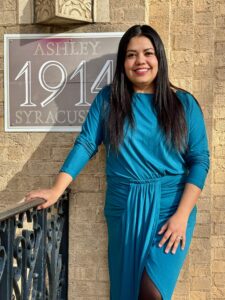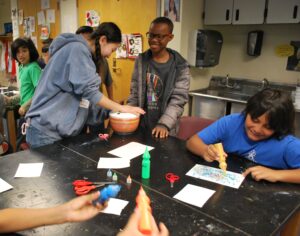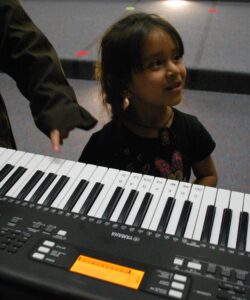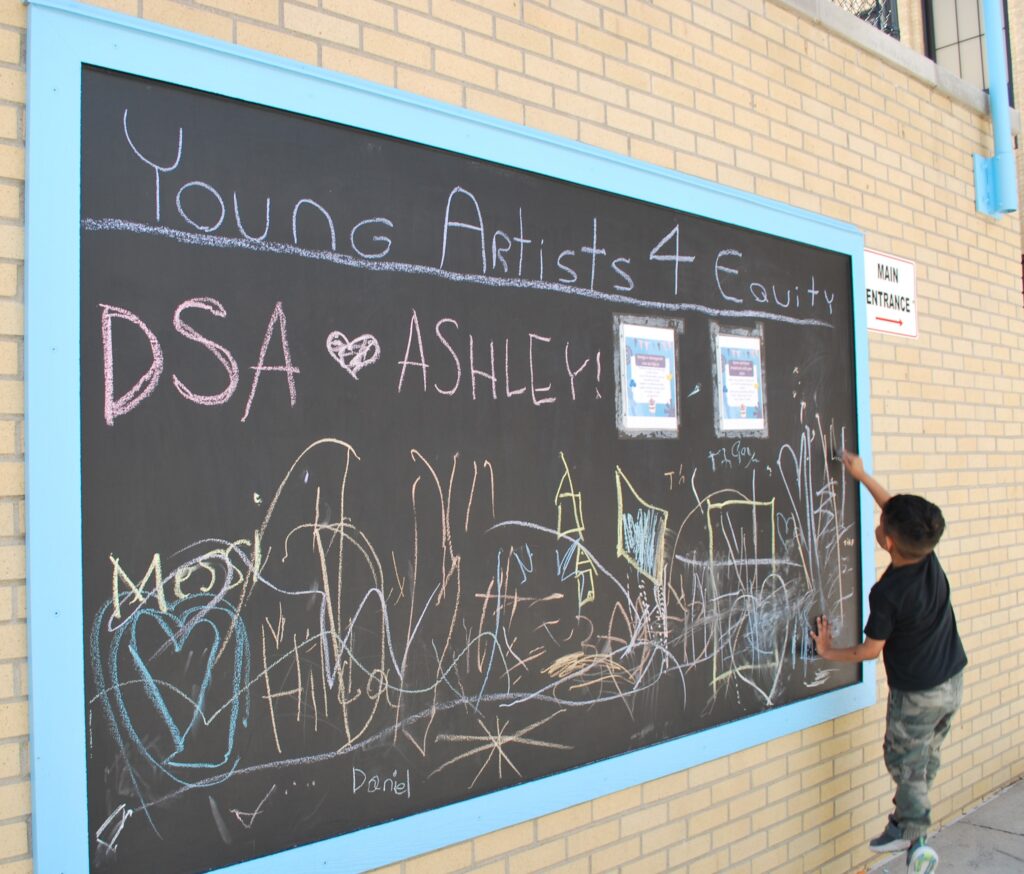(Cover photo by Victoria Holdgreve-Resendez, junior DSA film student.)
As his Ashley Elementary classmates enjoyed painting, playing on the piano and dancing, one little guy just sat there.
“He was like, “I don’t know where I want to go’; he wasn’t really interested in anything,’’ says Victoria Holdgreve-Resendez, a junior film student at the Denver School of the Arts. “So, I was like, ‘well, do you want to try photography’?
“So, I gave him my camera and he went around, and he was taking photos, and so we found something that he really liked. . . That’s the goal, to expose them to a bunch of different stuff.”
It was April 26, Global Youth Service Day, when more than a dozen enthusiastic DSA students spent the day at Ashley to give the school’s predominantly low-income and minority students a chance to try various artistic endeavors, many for the first time.
Holdgreve-Resendez and her colleagues are part of a student-run organization called Young Artists for Equity, a volunteer network working to mobilize art high schoolers around the country.
“Our mission is to bring equitable arts education to Title One (low income) elementary schools around the country,’’ says Maddie Lee, a DSA visual arts junior who, with Holdgreve-Resendez, was a leader of the local service day activities. “I know that there are a lot of passionate older kids who would love to work with younger kids and be able to share their passions.”
The hope is to stimulate passion that could possibly land them at DSA, a nationally recognized public art school with grades 6-12 that is located just four blocks west of Ashley which is at Montview Boulevard and Syracuse Street.

“All of our students have talent,” says Ashley Principal Janet Estrada. “The question is whether they have the access or support to tap into that talent.
“Can they grow their talents? With the correct support and resources, absolutely!”
Some help may come next fall when DSA will move its 11th and 12th graders across the street to a new $40 million expansion on the old Johnson and Wales campus; the rest of the campus is being redeveloped into affordable housing, a nonprofit food business incubator, as well St. Elizabeth’s School, a K-8 Episcopal school.
DSA officials have pledged to use the expansion to admit more racially diverse students to the school that is overwhelming white. The school says it will add an exploratory track for students who are still developing their skills.
“I sincerely hope that DSA is considering equity and diversity in their expansion plans,” says Estrada. “And that they are actively working to create pathways for students from underrepresented communities (like Ashley) to become DSA students.”
But overall, most disadvantaged students lack the support and opportunities long before middle school to even know what they may like in the arts field.
 “The idea is to give them exposure to different groups of arts and if they take to it, we can help them find ways to get more into it,’’ says Lee, “I think one of our biggest things is just exposure, exposure, exposure.”
“The idea is to give them exposure to different groups of arts and if they take to it, we can help them find ways to get more into it,’’ says Lee, “I think one of our biggest things is just exposure, exposure, exposure.”
DSA offers 11 majors: band, creative writing, dance, guitar, orchestra, piano, stagecraft and design, theater, video cinema arts, visual arts and vocal music.
Students must audition to get in, and the school accepts less than a third of the approximately 700 that apply each year.
DSA enrolls 1,100 students of which 18% are Hispanic, 6% are Black. Overall, DPS is 53% Hispanic and 14% Black. More than half of the DPS enrollment of 88,000 students qualify for free and reduced lunch (FRL), an indicator of low income. At DSA the FRL is 15%.
To nurture the talent needed to win a spot at DSA in sixth grade starts for many students by first and before. Many come from affluent families who can afford costly lessons, training and other experiences throughout their elementary years that prepare them well for that critical DSA audition.
Lee and Holdgreve-Resendez hope they can build interest from the DSA leadership and its students to work with Ashley on a more regular basis. They want to diminish the income and family limits that prevent most low income students from qualifying to attend their neighbor down the street.
In the next school year, DSA students will come Ashley on Wednesday mornings because of their late start at 10 a.m. They mostly work with third, fourth and fifth graders. After school is tough because of various other student commitments. Safety and logistics interfere with taking young students to DSA for activities. DSA teachers are not now directly involved but have offered art supplies, Lee says.
“As long as kids have an interest in the things that we teach, that’s potential’’ Lee says.
(Periodically the Foundation for Sustainable Urban Communities gives grants and technical support to Central Park schools.)




